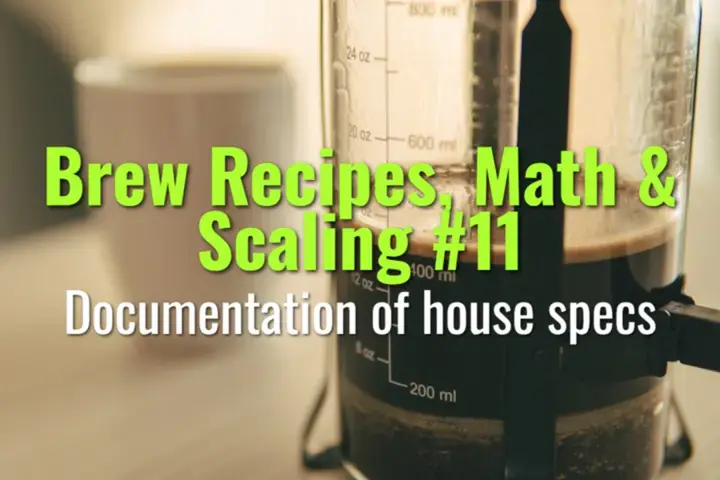Documentation of house specs
The importance of documenting house brewing specifications and how to create clear, usable references for baristas and staff.
- Coffee Basics Nerds
- 2 min read
Article 11 of 12 in Brew Recipes, Math & Scaling/

Why Documentation Matters
- Ensures consistency across shifts, baristas, and locations.
- Acts as a training tool for new staff.
- Provides a reference point for QC and troubleshooting.
- Reduces reliance on memory and personal interpretation.
What to Document
- Recipe Variables:
- Dose, yield, brew ratio.
- Grind setting reference (with grinder model noted).
- Water temperature and quality.
- Brew time ranges.
- Equipment Settings:
- Machine profiles (pressure, preinfusion, bypass).
- Grinder calibration notes.
- Filter types (paper, metal, cloth).
- Tolerance Bands:
- Acceptable ranges for dose, yield, time, and TDS.
- QC Checkpoints:
- When to measure, how to taste, who signs off.
Formats for Documentation
- Recipe Cards: Laminated cards at each station for quick reference.
- Digital Logs: Shared spreadsheets or apps with real-time updates.
- Training Manuals: More detailed specs for onboarding.
Example Espresso Spec
- Dose: 18.5 g ± 0.2 g.
- Yield: 36 g ± 2 g.
- Time: 27–30 sec.
- Water: 93°C.
- Grinder: EK43, reference setting 2.5.
- QC: First 3 shots of the day logged with TDS and sensory notes.
Example Filter Spec
- Recipe: 18 g coffee → 300 g water, 94°C.
- Brew time: 2:45–3:15.
- Filter: Hario V60, paper.
- Tolerance: ±0.2 g dose, ±10 g yield.
Best Practices
- Update specs after seasonal coffee changes.
- Keep old versions archived for reference.
- Train staff on both how to use and why specs matter.
Summary
Documenting house specs ensures quality, repeatability, and professionalism. Clear, accessible, and regularly updated specifications act as the backbone of a consistent café program, enabling baristas to deliver the same cup every time.